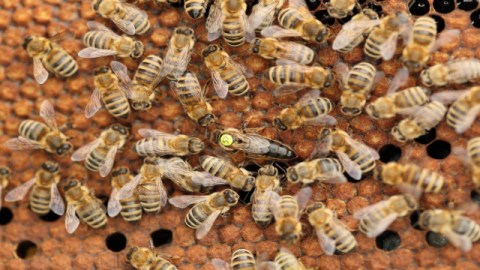Communicating Across Species: Jonathon Keats’ Honeybee Ballet

Imagine a world without bees, as this TIME magazine cover story has us consider. Honeybees are the “glue that holds our agricultural system together,” Hannah Nordhaus, author of The Beekeeper’s Lament, is quoted as saying.
The TIME article asks what would the absence of honeybees mean for our favorite foods?
The experimental philosopher Jonathon Keats asks a different sort of question based on a more personal interspecies connection. As humans are “destroying their habitat,” Keats wonders, “[is] there a way in which we can find some sort of a common ground?”
This is the sort of “naïve question” that Keats tells us he often uses as a launching pad for a new project, a question so naïve that you may have asked it once as a child.
Keats harnessed that youthful curiosity when embarking on his project to communicate across species “in a way that might facilitate a greater, deeper relationship between us.” The project that resulted, which Keats describes in the video below, is called The Honeybee Ballet.
Watch here:
Image credit: Shutterstock




